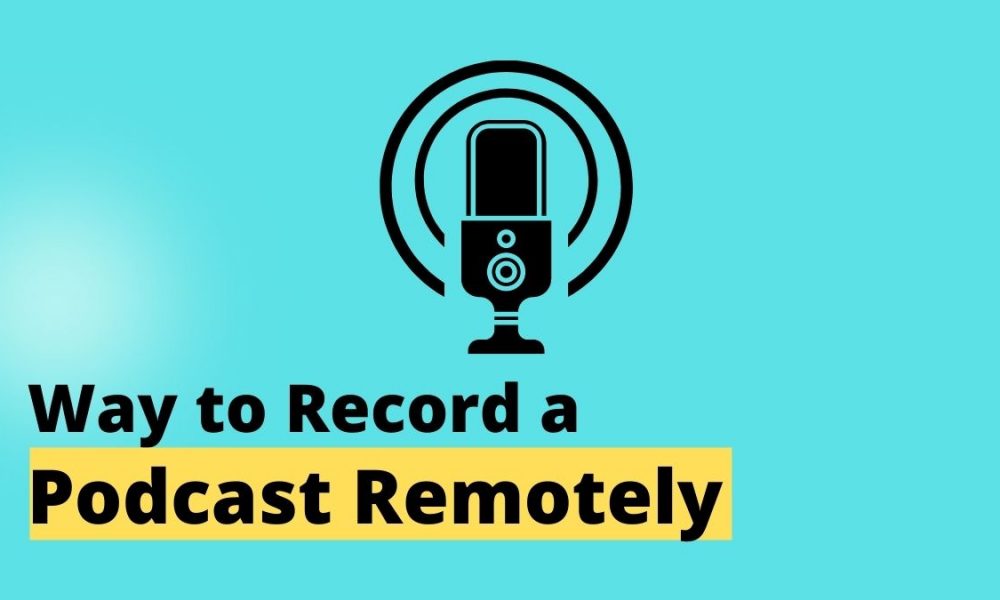Remote interviews have always been a crucial component of podcasting. However, if you are a beginner or are habitual of recording interviews in real life, plenty of questions must be in your mind related to record a podcast remotely So, this guide will cover all the basics of recording high-quality audio from the comfort of your home.
Basics of Remote Recording
Before explaining the professional method of remote recording, it is important to determine that you have covered the basics. These include a great recording environment and equipment. No matter how great your editing software may be, these factors are a must have. Plus, you can’t learn how to start a podcast without these components.
Purchase a Microphone
Even the best recording software won’t save you if you are utilizing a computer or an internal computer mic. Luckily, there are tons of excellent plug-and-go USB microphones in the market that are budget-friendly. Some examples are Rode Podcaster, Rode NT-USB Mini, and Blue Yeti.
Although USB mics are very useful, they can’t compete with the sound quality of XLR mics. Therefore, if you want professional audio, check out some affordable XLR setups. A valuable tip is to have a pop filter for the mic in order to eliminate the harsh plosive sounds.
Employ Headphones
Headphones are crucial for remote recording. Both you and your guest need to have a pair of headphones so that the mics cannot pick up feedback. The standard of your headphones is not as important as the quality of your mic. This means that if you already have a set of earbuds, they can be used as well.
Headphones also offer greater control over the sound so that you can make adjustments whenever and wherever you want. If your voice sounds muffled, move away, or get closer to your mic if your voice seems distant. Your headphones will also inform you if you are picking up any light background noise.
Establishing Your Home Recording Environment
While there is no need to soundproof your rooms, it’s critical to pick a peaceful space where no background noises will occur. Turn off the fan and other devices that create noise. A carpeted room can also dampen echoes.
You can tell other occupants in the home to not disturb you during podcasting. If you want to achieve professional audio in your home, it’s a great idea to invest in a reflection filter. This can be fitted right behind the microphone to discard echoes, resulting in a studio quality vibe.
How to Record a Podcast Remotely

1. Double Ender Recording
You and your guest will have to record the ends of the audio locally. Post interview, your guest will share their audio file. The two conversation ends are joined together. This is known as the gold standard of audio quality.
Recording software like Adobe Audition or Audacity is required, along with some platform for linking with your guest, such as Google Hangouts. Local recording prevents connectivity issues and audio compression.
However, there are some cons of double ender recording. For instance, your guest needs to establish a local recording arrangement on their side. Double enders are only suitable when both sides are tech-savvy and experienced. Plus, this procedure is exhausting as the two conversation ends need to be stitched and mixed.
2. Cleanfeed
This is a free browser app through which you can record excellent audio from different people at the same time. But it only works on Google chrome. Just make an account and invite your guest over for a call.
When the interview can be started, tap on the record button where you will have to choose a recording format and name your file. The recording can be paused and restarted anytime. After completion, click on the download button to receive your audio file.
Remember to not close the app until the file is downloaded, otherwise it will be lost forever. Although the functionality is minimal, it’s free and straightforward.
3. Zencastr
Wondering how to record a podcast remotely? Try this go-to platform, which is similar to Squadcast excluding the video conference feature. The basic plan is free, but it’s important to have a DropBox account to get started here.
At Zencastr, just make a new episode and send the link to your guest. You can upload sound clips on a soundboard that can be played during the interview.
After recording, the platform will share WAV and MP3 versions of each user’s recording to the respective DropBox accounts.
4. Alitu
This platform has added a call recorder feature through which you can record a show or interview and have them cleaned up automatically, from leveling to noise reduction, after the call has ended.
Due to the useful episode builder, the recordings can be tweaked. You can also add outro, intro, transition, or advertisement. Even if Alitu isn’t free, it offers a lot more than simple podcast recording. The in-built features of cleaning and editing the audio files have massive value.
How to Record A Video Podcast Remotely

While thinking about how to record a podcast remotely, it’s important to consider video podcasts too. We have gathered a few platforms that execute this task efficiently.
1. Riverside.fm
This is an all-in-one fix for remotely recording podcasts. As opposed to Squadcast, it enables you to record video and audio. Riverside.fm is perhaps the only platform in the market that allows you to record separate video and audio tracks for all guests in high studio quality.
The fidelity of the sound is a great perk over video call platforms. There are many more features on riverside.fm. For example, the audio is locally recorded, which means an unstable WiFi connection won’t influence your recording. No need to suffer from audio hiccups and glitches!
Secondly, it enables listeners to call in live with video in the recording sessions for asking questions. Being the host, you can directly engage with the audience and get immediate ideas and reviews.
Finally, it lets you expand your reach by live streaming your recordings to Twitter and Twitch YouTube. A free trial account is great for trying out these features.
2. Squadcast
Ever since Squadcast rolled out their video functionality, it has been a hit in the podcasting community. In fact, Squadcast is now a close rival of Riverside.fm.
After joining a session, you can view each user’s video, strength of their WiFi network, and their time zone. After you start recording, the platform uploads each user’s video and audio files on a cloud server. This means even if someone gets blown by poor internet connection, the recording won’t be affected.
After the interview is done, the files can be downloaded and shared to your favorite software for editing. Squadcast isn’t free and there are different plans according to your needs.
3. Zoom
The best highlight of Zoom is that it’s very simple to use. Guests don’t need to have their own accounts or download software. Only a link is required for the guest. Calls can be recorded with simple clicks. Two file types of recordings will be available after ending the meeting.
- MP4 video
This can be tweaked and uploaded to social media or YouTube.
- M4a audio
This can be dropped directly into the audio editor.
The sound quality isn’t top-notch, but bearable, and the connection is more reliable than Skype. While Zoom may be free, the basic plan only permits 40 minutes of recording time.
4. Skype
This is a popular video call platform and the latest feature allows you to record calls. But you need to install a third-party software for recording. Similar to Zoom, the invite process and starting the interview is simple.
There is no audio file available, only an MP4 video file. However, this can be converted to a MP3 version easily. However, Skype is notorious for having weak connections which makes the call drop frequently.
Last Words
So, these were the surefire methods of remote recording. We hope that your question about how to record a podcast remotely has been efficiently answered. Each show is unique, which is why only the host can decide an ideal method.

Leave a Reply